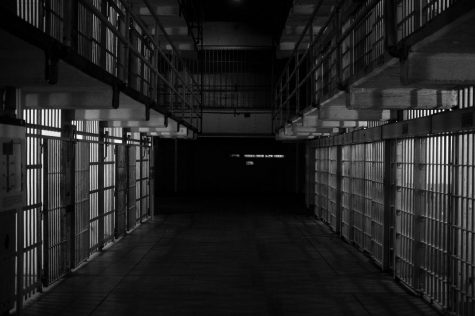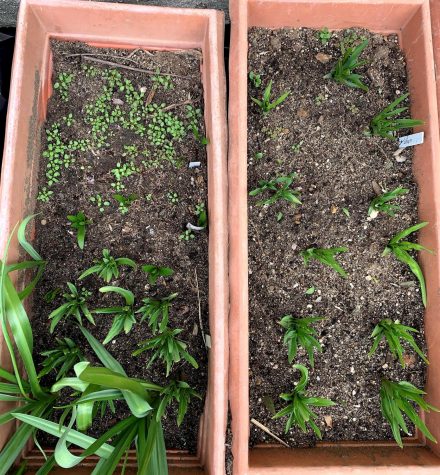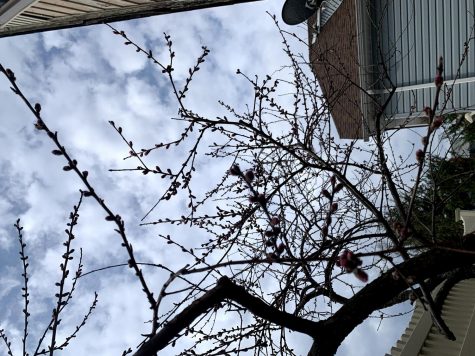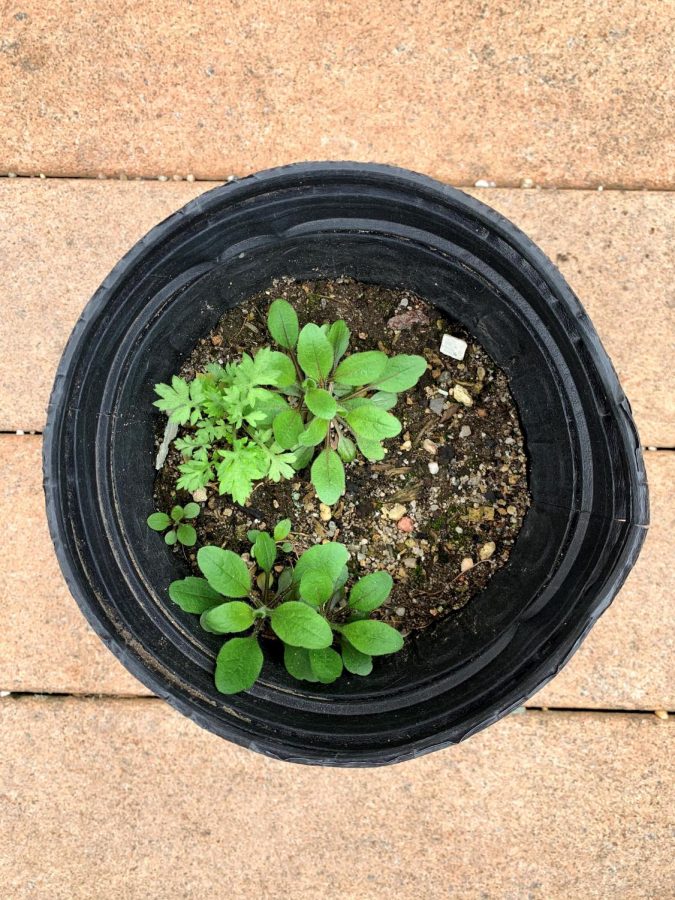An Overlooked Reality: Food in Prison – And the Efforts to Make It Better
The food that prisoners are served has long been of poor quality — rotten, spoiled, or infested — but a growing trend towards farm-to-table food systems suggests those with interest in prison reform are making headway, and potentially a more rehabilitative system is within sight.
A farm-to-table prison food system could assist inmates with developing a greater sense of purpose and responsibility to themselves and their inmates.
You check the clock: lunch time. Since the Coronavirus pandemic began, you have been unable to gather in the Chow Hall with the other inmates, so you wait in your cell for food. As the guards walk by, you start to wonder what the cooks made… some stale white bread, no doubt, as always. Maybe the cardboard-ish meatballs you had grown to like… Maybe some prunes or raisins on the side? That might be nice, you think — but then you remember that they have not been serving fruits or vegetables, and the thought of last night’s meal returns to your brain, right as a guard approaches your cell. You shake the uncomfortable thought away and get up to retrieve the towel he holds out through the cell’s bars.
The towel sits open-faced on your lap, showcasing a dry hot dog wrapped in a mushed roll, with two pieces of bread dabbed with a strange red-orange-brown sauce, made up of some corn kernels and pieces of mystery meat. You wonder what the meat could be, before downing the squashed bread and hot dog, and then moving on to the slices of bread — you’re starving. When you finish, you’re still hungry, but you know there are no seconds. Lying on your bed later that night, your stomach growls, preventing you from catching some rest.

This is the reality of prison food. The exact meal described above was shown in a photograph from a Texas prison inmate. Texas prison food, in particular, has become more unappetizing and inedible as a result of the COVID-19 pandemic, but it was already a deplorable situation. Due to the fact that prison guidelines depend on region and in the past have been unregulated or bypassed, food served to prisoners is often nutrient-poor and unappetizing. In cases where prisons are focused on cutting costs and saving money, food is one of the first services to experience a hit.
The Marshall Project, an Emmy nominated online journalism nonprofit organization addressing issues surrounding criminal justice, is avid about the demand for better prison food. One of their articles, What’s in a Prison Meal?, presents photographed recreations of prison meals based on details provided by the jail’s menu or secondary sources who reported the components of a meal on the menu. While some of the recreations seem adequately balanced, the recreations from the Morgan County jail in Alabama is most definitely a prime example of the injustice allowed to continue as a result of the lack of regulation of prison food guidelines.
Breakfast was made up of one piece of bread, one cup of oatmeal or grits, and half a boiled egg or less, while lunch remained two baloney or peanut butter sandwiches on white bread and a bag of chips. Dinner was often another piece of white bread with chicken livers or hot dog patties and beans or mixed vegetables. The lack of variety in the meals and the looming presence of white bread exemplify the lack of nutrients in the meals. If one were to calculate caloric values, the meals would not be adequate for the 2,400-2,800 daily calories recommended for men, or even the 1,800-2,000 recommended for women.
Sheriff Greg Bartlett was at fault for the coordination of these meals; in 2009 he was jailed, after admitting to depositing more than $200,000 in state money put towards prison meals, into his personal account.
Other recreations, although seemingly adequate, do not accurately depict the whole scene of corruption behind the food prison systems. As previously stated, prisons that are concentrated on cutting costs and saving money will often target food service. This results in not only lesser quality meals, but also fewer meals. For instance, at Georgia’s Gordon County Jail, inmates were fed twice a day, about 10 to 14 hours apart. Nutrition experts recommend eating 3-5 hours apart, while naturally the typical three meals and additional snacks tend to fall within that range. Prisoners said they dealt with gnawing hunger from such long breaks between meals, by “licking syrup packets and drinking excessive amounts of water.”
Many lost substantial amounts of weight according to the Southern Center for Human Rights, proving the meals grossly inadequate. The recreated images also display given portion sizes on the menu — and attorneys claimed that inmates receive smaller portions than what was listed, as noted in these two links: (1) (2). Without transparency of prison organizers, how is the public to know what injustice is allowed to pursue? Lack of honesty and subsequent corruption is thus another huge issue entwined in the prison system.
The lack of systematic organization of the prison food system allows prison officials to remain nontransparent about portion sizes and fund uses; the pride associated with cutting the costs of prison services adds to this, by pulling the focus away from the condition of inmates who suffer at the expense of such actions. While the morality of some inmates is arguable, inadequately feeding them does not seem to be the “rehabilitative approach” that is falsely claimed to be the purpose of the prison institution.
But the work of the Marshall Project and other organizations seem to be turning this reality around. The Mountain View Correctional Facility in Maine has established a farm-to-table food system that teaches inmates about farming, harvesting, and constructing healthful plates.
Started by farmer Mark McBrine, the facility’s food service manager, the system saves money while providing healthier and more appetizing meals. McBrine is avid about his approach to create a more rehabilitative environment through food, vigorously pursuing local farmers and sources for products that his own facility does not grow — like surplus organic mushrooms, and multigrain stone-milled flour.
The length to which McBrine goes to prepare healthy and satisfying meals to inmates shows his devotion to creating a better food system. Last March 2020, he prepared a full Thanksgiving-style dinner with its usual accompaniments, finished with his own grandmother’s recipe for turkey pot pies under a biscuit topping. This philosophy of care is one branch of Maine’s prison’s movement towards better prison life.
The state of Maine’s corrections commissioner, Randall Liberty, is a former inmate’s son and experienced having to contend with “molasses and biscuits for dinner when money was tight.” Currently, Liberty works as a certified master gardener and beekeeper. His work ebbs into the purpose of his prison food philosophy.
By composting leftovers from meals at Maine State Prison, Liberty was able to save $100,000 annually, and enriched the soil to produce two-and-a-half acres of vegetables. He also installed beehives and implemented the system which allows prisoners to become certified master gardeners or beekeepers through a cooperative extension of the University of Maine.

The New York Times notes that initiatives like those in Maine are rare, however. Citing Eating Behind Bars: Ending the Hidden Punishment of Food in Prison — a report conducted by Impact Justice, an organization devoted to reconstructing the current justice system — they illustrate the reality in most prisons: “slashed prison budgets have resulted in fewer hot meals, smaller portions, poorly equipped and unsanitary kitchens and 20-minute-or-less meals in cacophonous and dehumanizing chow halls.” The effect of such poor prison food is indisputable; data shows that incarcerated peoples suffer from higher rates of chronic conditions like cardiovascular disease and diabetes.
To add to this issue, the majority of those locked up are minorities, and many find themselves in jail due to the school-to-prison pipeline that targets such minorities. Prison food is one of the branches operating out of the corrupt criminal justice system which beats down its members of society under a false name of “rehabilitation.” Instead of actual rehabilitation, like education and discussion, inmates are punished on a daily basis through the inadequate and often spoiled food they are served.
However, the Correctional Facility in Maine, and the philosophy by which Maine’s correctional facilities are now abiding, seems to suggest a better future is underway. Hopefully, correctional facilities around the country can take this step towards a more rehabilitative institution of justice. As Jeff Morin, Mountain View’s warden, observed in the Times’ article, “If they don’t feel good, they’re not going to act good.” Food is foundation, but for these individuals, it could be something more.
The lack of systematic organization of the prison food system allows prison officials to remain nontransparent about portion sizes and fund uses; the pride associated with cutting the costs of prison services adds to this, by pulling the focus away from the condition of inmates who suffer at the expense of such actions. While the morality of some inmates is arguable, inadequately feeding them does not seem to be the “rehabilitative approach” that is falsely claimed to be the purpose of the prison institution.

Josephine Kinlan is a Copy Chief for ‘The Science Survey.' She has always enjoyed literacy surrounding current events, since grade school, and has found...











